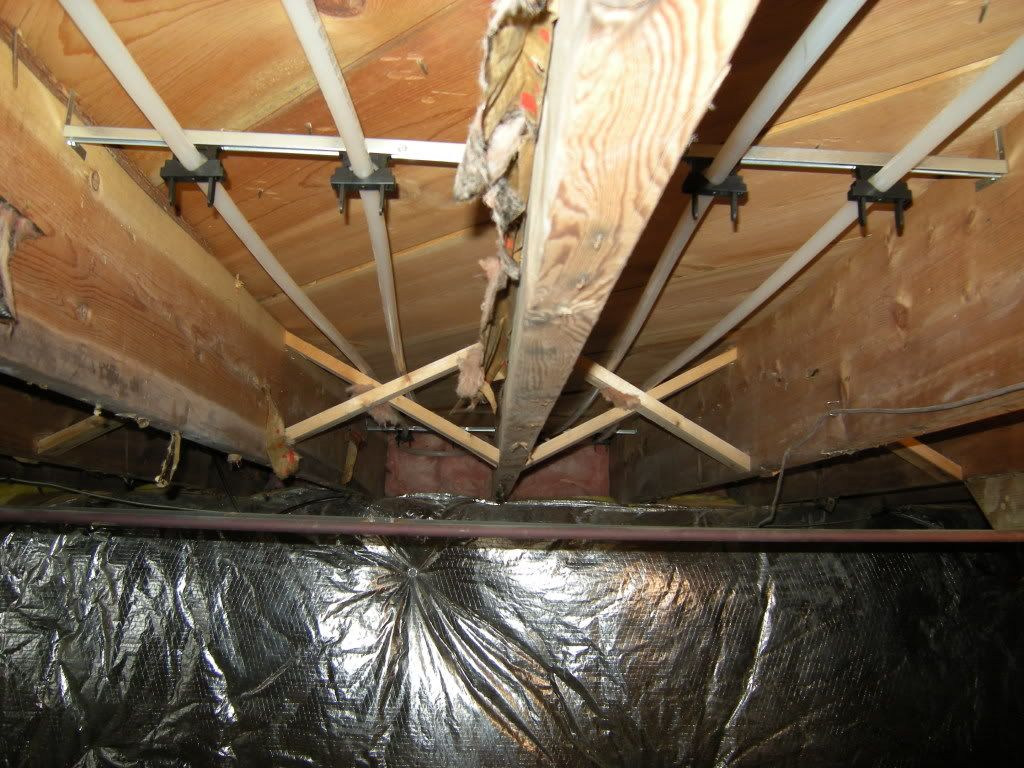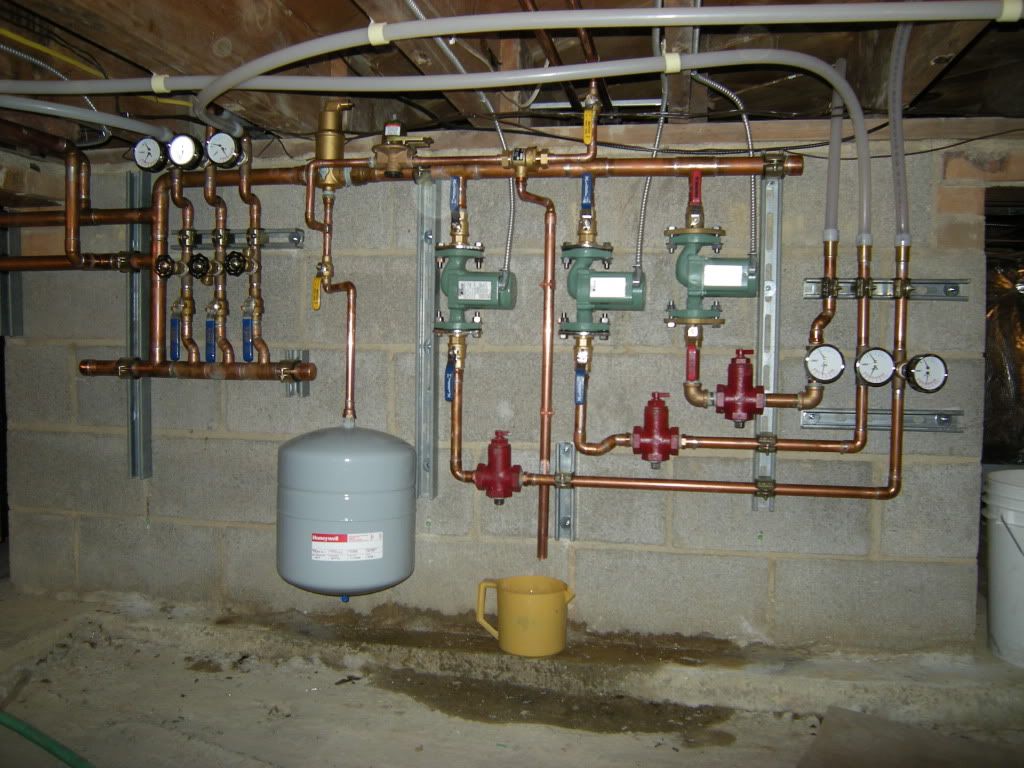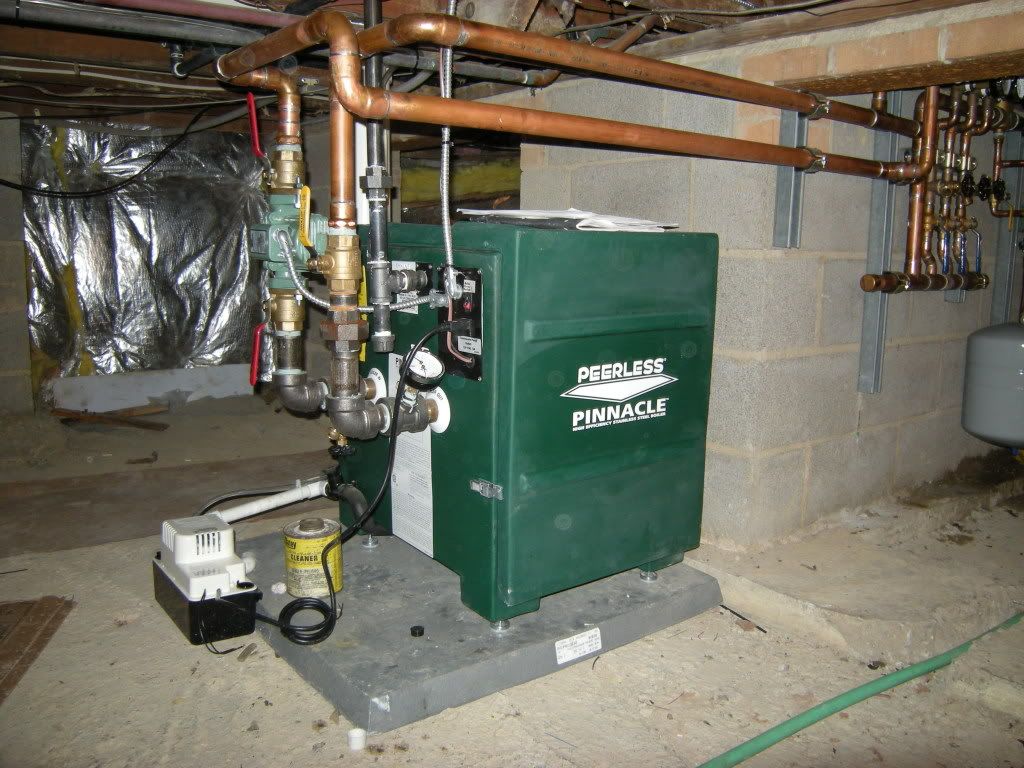Welcome! Here are the website rules, as well as some tips for using this forum.
Need to contact us? Visit https://heatinghelp.com/contact-us/.
Click here to Find a Contractor in your area.
If our community has helped you, please consider making a contribution to support this website. Thanks!
insulaltion for under floor ?
Options
john_215
Member Posts: 5
In one installation I did use reflective board as spacers along the joists but questioned it later. I would think that once the system got hot (with continuous operation the ideal), without new air in the box, the only convection thats happening is in the crawl space and on top of the finished floor.
0
Comments
-
Insulation for under floor heating?
I have just had a new hydronic system installed in my home. Pex tubing was hung within the floor joist cavities under the kitchen and baths. The installer noted that I would not see the benefit of these zones until the joist were insulated. My question is what to insulate with? Do I just use standard batt insulation? Faced? Unfaced? Radiant type Ie...reflectix?0 -
got a picture?
of the installation?
whats a normal cold winter temperature there?0 -
I could get a picture? Of what components? What other info would you need? I am just outside of Cleveland Ohio zone 5. Temps in the 20' to 30's usually. Installation is in a conditioned 4' crawl space0 -
underfloor insulation
C-
If as you describe the PEX is hung in the joist bay (meaning no aluminum heat transfer plates) then you need to put insulation 2 inches down below the floor aith a reflective surface facing the radiant tube.
In tyhis application i=t is MOST important to make you seal the space with insulation. NO GAPS. Plates at the end must be insulatred. You must create a 2" sealed air space.
Of course, if you have aluminum plates this changes everything.
In any case, 5 times the floor covering is the recommended R-value of your insulation. Minimum R-10.
Forget foil bubble foil unless you use this as your reflective surface and insulate below.
steve0 -
-
how far from
the bottom of the floor are the tubes hanging? are they to be attached? al plates?0 -
Tubes are two inches below the sub floor. No aluminum plates. Can you see the pics or did that post not work the way I had hoped?0 -
how did you get those pictures to show as part of the text?
I like those Sioux Chief hangers, but not that application. What you are doing is sometimes referred to as joist bay heating. It's not true radiant heat you are heating air in the joist bay and indirectly heating the floor. This will in all likely hood require water temperatures similar to base board or other convective heating methods. Depending on the actual heat loss of the structure you may have trouble moving enough heat to keep the house sufficiently warm at design conditions.
Joist bay heating is best done with pex/al pex because of it's stiffness and lower coefficient of expansion. Forgot the name of the product but there is an aluminum plate that is designed to straddle the suspended pipe and act as a convector. Your munchie or peerless probably wont do all that much condensing in this application. Don't skimp on the insulation you should have a reflective barrier as well as a conventional insulation, I hate glass in spaces like that because of it's mouse nesting, moisture holding, toxic properties.
0 -
The pics are hosted on www.photobucket.com I then slected the HTML encoding that they provide and copy/paste into what ever forum I want to post a pic in.
Onto Heating..... This system is replacing all electric baseboard heat dating from 1950. All of the electric baseboard was removed and new hydronic radiators installed in their place. The majority of my home has the baseboard type radiators. The three small rooms, kitchen and two baths, are at the end of three zones and are in the same loops as the radiators.. On the fourth zone we installed two Triangle tube Smart 3O tanks for domestic water and eliminated the old 50 gallon electric water heater. Previosly the kitchen and baths had these toasters in them.
More pics...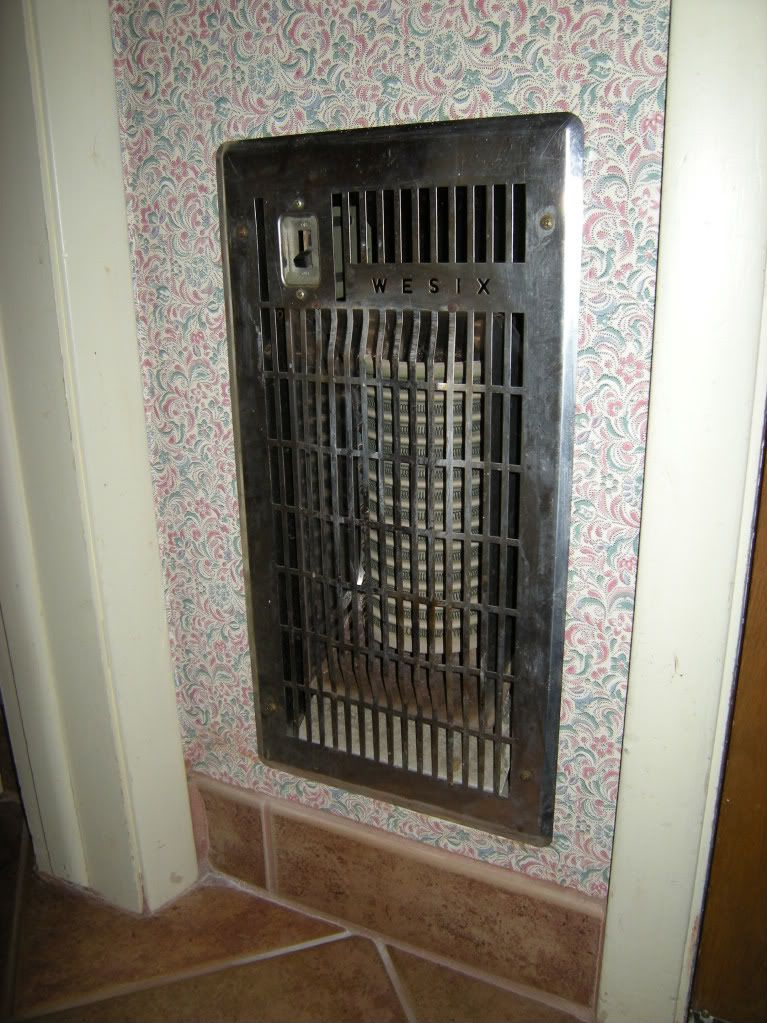
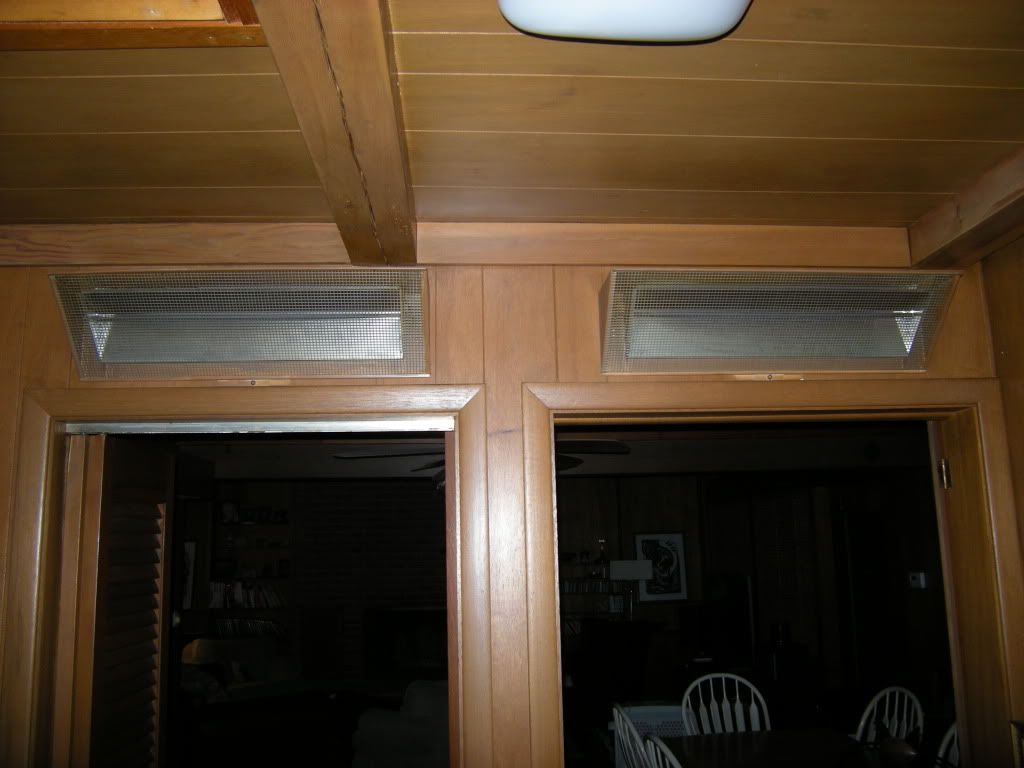
It sounds like I need to find some R19 16 inch batts with a reflective face to fill the joist bays. Reflective side up? Would these be secured in place via staple? Will my local Homestinko have such a product?
FWIW as I type it is 37' outside and warm in these rooms.0 -
If the joist bay heat is supplementing radiators you should be fine, but at 5 below you would need a pretty tight envelope to heat exclusively by the method you have shown, 37 is hardly a test.
For a radiant barrier to be effective there needs to be air space between the reflective material and the pipe or (sheatrock etc.) Can't say I understand the physics of this but it's something often repeated and I trust it to be true. So don't push that insulation right up against the pipe. Also it's pretty hard to find foil faced fiberglass these days and some say the quality of the aluminum layer on glass bats is questionable because it oxidizes relatively quickly and looses much of it's reflective value. Another factor that can effect he quality of a radiant barrier particularly in a horizontal application is dust, Apparently a layer of dust can significantly diminish effectiveness.
Sorry to criticizes your instal but I think you would have a much better system if you had used plates and direct conduction as opposed to suspended tubing. The efficiency of you mod-con boiler is directly effected by operating temperatures.0 -
I agree
w/ Scott. Don't expect too much effectiveness with the suspended tube, especially with the hanger spacing I'm seeing. Looks like the supply temps are WFO on call (no mixing), and that PEX is going to grow like nobodies business as it gets to high limit. In turn, it will droop and flex even farther away from the subfloor. On a typical suspended, as mentioned, you need to maintain a 2" air gap (just about impossible) and seal the joist bays (optimistic at best) to get the most out of this application. Of course, your water temps are usually maxed out, leaving no cushion for future floor covering changes, furniture re-arrangement, and just comfort adjustments.
R19 minimum, faced or unfaced, I prefer unfaced b/c the paper just wrinkles up more than plain batt making the "reflective" surface that much more inconsistent in air gap. The wide tube hangers here will make the air gap all over the chart
Plates (heavy aluminum) would have been the way to go, for a whole bunch of reasons 0
0 -
Tube Support
Pex tubing should be supported every 32". The way this is installed the tubing will droop like crazy and probably rest on the insulation. If these joist bays are typical, it wouldn't be a big job to grind off the protuding nails and add transfer plates. Would probably lower the required supply temperature by 30 degrees.0 -
a quick fix?
ultrafin might be a good quick fix, you'll get some more output and thus lowering your return water temps.
do a search here for 'ultrafin' you'll find some good info.
how is the system controlled? simple thermostat?
I'd think of cutting tight to fit foam board, then stuffing some fiberglass up. I prefer to use foam board around the bond or perimeter areas with foam-in-can to seal these areas up tight.0 -
Thats the answer to the question I was about to type. It sounded like the method of attaching the tube in the bays was an issue and the concensus was to add transfer plates. Will the bays still call for insulation if transfer plates are fitted?
Thanks for the help guys. I want to make sure we get things right before evrything is buttoned up.0 -
Cleveland Weather
I am glad you are buying into installing plates. I would insulate even using plates. Foil insulation is hard to find. We use bubble foil, foil up at 2 inches below the tubing and plates, then r-19 batts.
We have lots of warm feet here in Cleveland.
You will want to add a mixing valve to the floor zones to lower the supply temperature.
Mark0 -
I wont comment on the suggestions so far, nor give any rationale. I will say that I am not a professional.
Here's how to do it:
Clean the underfloor as best you can and paint it black.
Go buy the cheapest reflective backed board you can with any stiffness to it--probably 1/2" poly cyo something sheathing.
Cut it into joist width strips 4ft, tight fit.
Install spacers to hold the sheathing an inch or so below the pex. I've used pushpins both to space it and hold it up.
Deal with the bridging with precut and glued pieces.
Caulk or tape any joint where you feel heat.
The R val of a reflected space in a downward flow is around 4, if the above isn't enough (I have no design numbers) add a layer with an air space.0 -
radiation from a round tube
your suggestion sounds reasonable for radiation.
but when you think of the actual surface area that points in the direction of the floor its really, really small. and at the same time the tube surface facing the reflective lower surface is the same, really,really small. the vast majority of the tubes radiation would therefore hit the joist, causing them to heat up.
so it really seems that type of installation relies mostly on convection.0 -
always get convection
unless you get rid of gravity or the 'box' has R value of infinity.0 -
I do not think Christopher is looking
for a quick fix. I see a WIP that needs to be improved.0 -
yes
R19 minimum. No need to get fancy, once it's plated (again, a product like Uponor's Joist Trac, not the cheesy flashing type), stuff it right up against the plates. With reasonable care, it's hard to mess up.
Of course, you could icynene the area if you want perfection.
Don't forget to provide for slab sensor/t-stat such as tekmar 501 or Uponor 511S. Your adjoining areas that are heat by other sources may trick out a conventional stat before the floor gets going...
Mark has a good point about the water temps. You may see 130-140 needed vs the 160-180 the current set up likely needs. Time for a radiant design to reveal requirements!0 -
What is icynene?
I run most of my floors in the 85* to 95* range. The only thing I run wide open is a snow melt system in Akron.
TY Bob, Most of my jobs are all radiant, so I forget about slab and/or loop sensors. You have a good point.0 -
ok, how about a reasonable improvement?
looks to me like the system operates off one temperature, ultrafin would be a simple solution to get more heat in the areas without adding mixing.0 -
jp
I am in the Cleveland Ohio market and do design build radiant, geothermal and now solar. I would use extruded plates to fit the pex. Short screw to the subfloor and rubber mallet the pex in place.
The only time I have not used plates is using Watts Onix. The 2" rule is flexible, what one wants to do is nudge the heat. First law of thermal dynamics is heat goes to cold. So with this job, (thanks for the great pictures, Christopher) all open, a WIP, work in progress, I would buy the plates. They can be installed on the current installation. No rework.
Insulate.
Add a "t" and a manual three way mixing valve and you have what the customer wanted.
Mark0 -
I am looking
I am listening and learning I think....:) keep it coming0 -
Do you want it to work?
Drop me a line.
We rescue jobs all the time.
Mark0 -
Hi Mark
spray foam insulation, hope I have the spelling right 0
0 -
Great stuff
I never get the right sized can.
Too much
or
Too little.
TY again0 -
expenisve fix for small problem
seems like a big expense for 2 bathrooms and a kitchen.
as the post reads, most of the house is baseboard. so why add all that extra stuff when utltrafin would most likely work fine, no mixing.0 -
Extruded plates are expensive, but they eliminate the droopy pipe problems and can move alot more heat in the right direction, Either way insulation is important. I just did a small extruded plate job that's going to be icynened directly over. I'm not too woried about a reflective insulation element, because i'm confident that the plates will directly conduct heat to the floor by virtue of direct contact.
Ultra-fin can work at the same reset curve as the baseboard. And for this reason it could make sense as a lower cost option.
Getting more hangers on that pipe, putting some ultra-fin on the pipe and doing a nice job with some 2" aluminim foam should yield good results.
I would consider undercutting the foam (loose fit) and chinking with a professional spray foam applicator gun $40. The push pin idea might work nicely with this, holding things in place until they get glued in with the foam. could be a bit of an issue with keeping the can inverted enough, it gets tricky especialy as the can starts to run out. You could probably find an average size and avoid lots of back and forth custom cutting. A table saw makes fast straight cuts, but scary kick backs are common for the unseasoned operator.
If the system incorporates a mixing valve, the boiler will only be as efficient as the high temperature side of the system. The ultra fin will help you supplement your baseboard, and permit somewhat lower (more efficient) odr curve.
Lot's of options, but just stapling some reflectex up against that loose pipe should not be one of them.0 -
it's all about
response time re insulation, with the secondary consideration of heat spread when dealing w/ "less expensive" methods of tube attachment (suspended, side joist, direct staple up). Well intentioned air gaps rarely are consistent or reliable.
Conductivity is king. Followed by a thermal barrier right up against extruded plates to get that heat up through the floor faster than it can travel downward.
Twenty minutes or less response time in a dry system is an attainable goal 0
0 -
I dont know,,,
the floor is over a conditioned space. If it was exposed to outdoor temps or even basement temps I might agree with you all. I have used strap up with an airgap and insulation underneath over conditioned spaces exclusively and never have had a problem. And if any of you recall, my last job runs only 112* max water temp with a 10* diff. so average WT is ~107* and I heat the floors above to 75* no problem at all with just FBF underneath. If you ask me I'll tell you heating the air in a small gap underneath provides much more even heating of the floors. I don't use the plates or quik trak because both are very expensive and are usually the difference between getting and not getting the job. My suggestion to him is create an air gap (I like 1.5" myself) with foil bubble foil and then insulate under that with R-19 fiberglass batt. If the tube droops and lays on the insulation, no big deal. He should understand however, the object is to heat the space, not warm the floors. This is a very common misconception. In most cases if the floors feel warm the space will overheat. Ideally the floors don't feel warm, they just don't feel cold and that's exactly how I explain it to my customers.0 -
Thinking out loud...
Thank you all for your input. At this point the installers are still planning on coming back and cleaning things up and tweak what has been done so far. They will be the ones installing the insulation. I just need to figure out what insulation products I want to use and the methods of attachment I would like to see. The local building inspector said batts with facing up. If I add plates or more hangers, either way I will have to insulate.
I just priced out the extruded plates from Wisbro to do all of the kitchen and bath areas and it looks like we will need about 100 of them about $700 from my online pricing. I still may go that route. The kitchen area already has a mixing valve to drop the temps in that area and it should not be an issue there. The bathrooms do not have the valves in place as they are at the end of long loops and the temps seem to have already dropped by the time the water gets there.
We have on hand many more pipe hangers and it should take little effort to hang more at a closer spacing wherever we choose.
It seems to me and that one viable option would be to change just the kitchen out to plates. The home has a great room concept and the kitchen opens to the den family room and the dining room. Add more hangers to the bath areas. Then insulate. What are your thoughts.?
Christopher0 -
I think I hate winter in Cleveland.
I think you are on the right path. I know since we are getting away from using copper, that changing the piping to the bathrooms is not a big deal if the bathrooms overheat. My tendacy is still use a reflective insulation when not using plates and unfaced R-19. You can use stiff wire slightly longer than the joist bay or tack up flexible wire to hold the batts inplace.0 -
Extruded aluminum plates!
All the way. I must agree with- the plates are needed! I am in Buffalo NY. Not so far from your temps. We need plates here. You need plates. Period. Your boiler works much more efficient at low temps. The plates will allow comfortable heating at low temps. and keep that boiler in the condensing mode. That = dollars saved. In our temperature range you will feel warm floors when the heat is on or you will be cold. I sometimes think the confusion comes from installs in more moderate climates. There you can get away with joist bay heating. Here you need real conduction to supply enough temp. to the floor. Anything else is a bandaid. Do it right-do it once. JMHO That's what I thinks.0 -
Insulation
The system will work at significantly lower water temps with transfer plates! Insulate the bays with R-30 batts, and insulate the near "boiler piping" with 3/4" wall Imcoa neoprene or similar. To do less, compromises the installation and reduces efficiency.
To Learn More About This Professional, Click Here to Visit Their Ad in "Find A Professional"0 -
foil faced insulation
as soon as the foil gets dusty, the foil has little reflective value. Plain batts are more cost effective. Transfer plates come in 1/2" or 3/8". I presume you didn't use 5/8" pex??
To Learn More About This Professional, Click Here to Visit Their Ad in "Find A Professional"0
This discussion has been closed.
Categories
- All Categories
- 87.4K THE MAIN WALL
- 3.2K A-C, Heat Pumps & Refrigeration
- 61 Biomass
- 429 Carbon Monoxide Awareness
- 120 Chimneys & Flues
- 2.1K Domestic Hot Water
- 5.8K Gas Heating
- 115 Geothermal
- 167 Indoor-Air Quality
- 3.7K Oil Heating
- 77 Pipe Deterioration
- 1K Plumbing
- 6.5K Radiant Heating
- 395 Solar
- 15.7K Strictly Steam
- 3.4K Thermostats and Controls
- 56 Water Quality
- 51 Industry Classes
- 50 Job Opportunities
- 18 Recall Announcements
